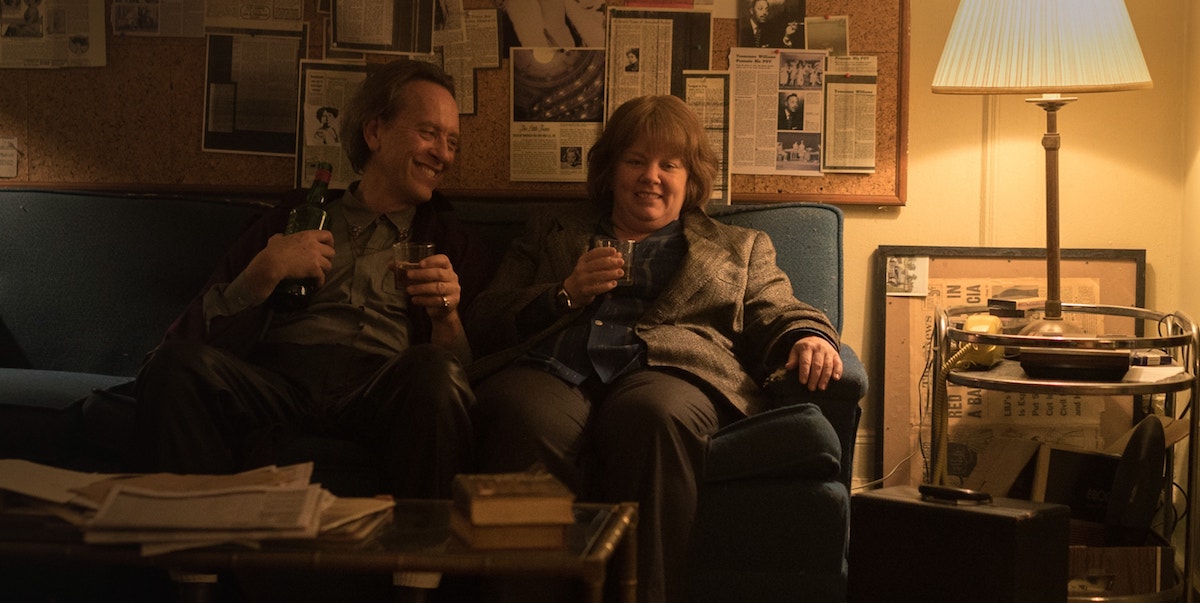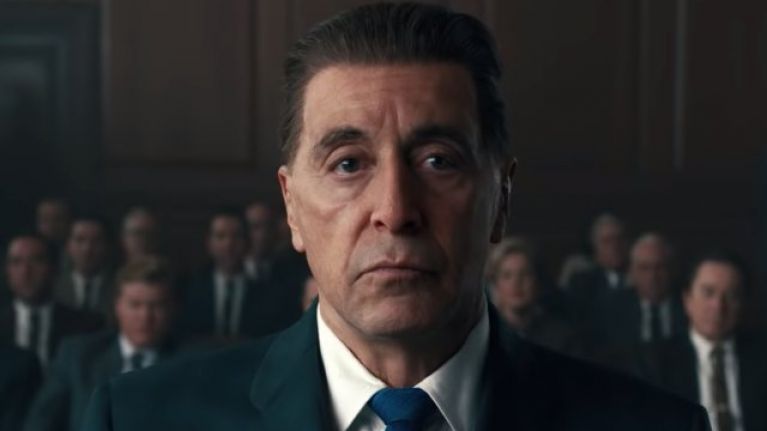
I thought Joe Cornish and Stephen Moffat did a good job of rewriting TINTIN as an Indiana Jones movie for Spielberg, which he then rather badly screwed up with hideous mo-cap. But either or both of them might have made a logical choice to write the new for-real INDIANA JONES AND THE DIAL OF DESTINY. Instead we get the Butterworth Brothers — the only thing of their’s I’ve liked was EDGE OF TOMORROW, and that had Christopher McQuarrie on it — and David Koepp, who is a decent writer and director and a logical choice — and the result has already been sentenced to death by the public using the weapon of indifference, so does it need me to stamp the dirt down?
In fairness I should admit that the audience I saw it with seemed to enjoy it — the little old lady on my left kept up a monologue which I only heard fragments of (the movie is LOUD) — “A good punch…” “That’s his wife… that’s his wife… that’s his wife.” There were no audible laughs, though — maybe the film drowned them out.

I did my best — I figured the film would either be an interesting misfire, like SEXTETTE, or it might actually be fun. James Mangold is someone I keep having hopes for, like Koepp, and sometimes they seem justified. So I was trying to like it.
We begin with a short remake of Frankenheimer’s THE TRAIN, with a de-aged Harrison Ford assisted by Toby Jones. If only Mae West in SEXTETTE had had digital assistance! The tech seems to have gone backward since THE IRISHMAN, though — Ford’s features seemed to subliminally float free of his skull, just a tad — I thought this might be my imagination, but they kept doing it when he rode a horse through New York. And the gravelly voice emerging from the youthened face betrays the artifice — how odd that we can de-age a face but not a voice. And the loose, flailing movements are not those of the young Ford, or the young Vic Armstrong.
Why drag the Lance of Longinus into things, only to dismiss it unceremoniously? They can’t even call it the Spear of Destiny, because they’ve decided to call the Antikytheria Mechanism “the Dial of Destiny,” which is admittedly a cooler and more memorable name. INDIANA JONES AND THE ANTIKYTHERIA MECHANISM would perhaps not have grossed $172.5 million and counting (an impressive sum until you learn that the film cost $295 million).

The film’s first impressive scene is of Ford, in 1969, padding about his New York apartment in his shorts. The Ford bodywork has a lot of hard, impressive muscle, which looks like the result of work rather than iron-pumping. Maybe it’s all that carpentry. But gravity and time have been at work too, so it’s not a body of the kind we’re used to seeing, or liking. It’s a brave scene for Ford to have done. It would be a good set-up for a movie where Indy struggles to do the impossible things he used to do.
Unfortunately, the octogenarian action hero is still able to do pretty much everything he used to do. Back in THE KINGDOM OF THE CRYSTAL SKULL he was getting too old for this shit. Now he IS too old for this shit. Still, there’s all that lumpy muscle — I could believe Ford could punch me out — whether he’d break his hand or not is something we don’t need to worry about.

I don’t know what an eighty-year-old action hero should be capable of — it’s not a problem cinema has had to grapple with much. Part of what made Indy much more human than James Bond, one of his many fathers (along with Charlton Heston in that film and lots of movie serials) is that Ford gave us a sense of the character struggling and being scared (Lucas, Kaufman, Spielberg and Kasdan took care to give him an Achilles heel, his Ophidiophobia) — I always think of his gasp of terror when the big stone ball comes rolling at him.
Lots more of that kind of difficulty might have been useful. When Indy starts fighting, for what we presume is the first time in some years, a sense of the fear and the knowledge that this is going to hurt and all the old moves might not work, COULD have been built into the script, direction and performance, but they’re not. And then, when the film gets Ford onto a horse without showing him mounting it, I feel like they’re not even trying to sell this stuff.

This is also a Phoebe Waller-Bridge vehicle (Toby Jones doesn’t stick around very long, alas). She’s an interesting choice — brittle posh lanky women get to be action heroes about as seldom as gentlement nudging into their ninth decade. I’d like her in the role if her character weren’t so unlikeable. One of the many lessons of TEMPLE OF DOOM should have been, “Don’t make your heroine annoying.” The grating awfulness of Helena “Wombat” Shaw does go away about halfway through the movie, but her anything-for-a-buck venality and her snide arrogance aren’t dispelled by any clear character-building. How many people does she get killed? Maybe all of them? All the deaths can be laid at her door, maybe. OK, I can’t honestly hold her responsible for the Battle of Marathon, but some culprit must be found. She’ll do.
(In THE FORCE AWAKENS, Ford played a Han Solo who had returned to smuggling but was now shit at it, and conned his allies, and got people killed. “A reminder of your own mortality,” is how one friend described the sight of Ford slipping into his space waistcoat again. He’ll love this one.)

The film does have a good baddie — Mads Mikkelsen as “Dr. Smith” — he has the only really good line in the movie — “How are you enjoying your victory?” to a WWII veteran now delivering room service. Made me want to see him get killed, which is what was required. Which then reminded me that I HAD seen him get killed — pranged off a fast-moving train. He should at least have had a MAD LOVE neck brace to hold his head on after a thing like that.
FAR too many innocent bystanders get killed in this. Needless to say, there is no time to mourn any of them. It becomes wearing. The first two fatalities cause Indy to be hunted for murder, but he’s able to get on a plane without any bother, and then we never find out what happened to the case against him. Almost as if it wasn’t worth bothering with including it at all.
OK, big spoiler here, but after the rather dull scuba stuff, with Antonio Banderas put to no good use, and the rather dull cave scenes, the thing really jumps the shark at the end. I was trying to keep an open mind, wondering if this sort of malarkey was appropriate to this sort of movie, but I decided it didn’t because I found I couldn’t care about anything that was purportedly happening. It was the most indifference I’ve experienced in any Indiana Jones film. Usually one at least has a reaction, and in films 1 and 3 usually it was a positive one. In films 2 and 4 sometimes it was.

Lots of people worked hard on this, but the lack of Spielberg’s guiding hand certainly shows. Mangold has a history of making films that strain against the genre conventions, but then fall back within them , exhausted by the struggle. And the drop in interest that we got in the fourth film, where everything was CGI, is even more evident here. It seems like MISSION IMPOSSIBLE and the Bond franchise, by risking people’s necks, are doing this kind of action adventure the only way it deserves to be done. If the thrills are supposed to come from non-superpowered morals doing things that mortals in theory CAN do, then we want to feel that somebody has actually done this stuff for real in front of a camera. Tricky, since I don’t believe anybody should have to get killed to make a movie, and if we keep making this kind of thing, people will.
INDIANA JONES AND THE DIAL OF DESTINY stars Rick Deckard; Fleabag; Zorro; Jenny Hayden; Gimli; Dora Milaje (1992); Captain Englehorn; Dr. Arnim Zola; Quinn McKenna; Ursa; Nadir; Dr. Hannibal Lecter;




